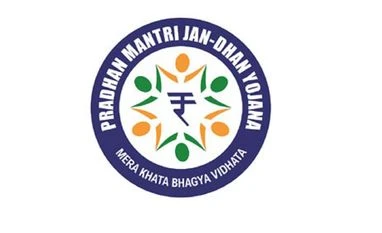The year 2024 marks the tenth year of the Pradhan Mantri Jan-Dhan Yojana (PMJDY), the national mission for financial inclusion to ensure access to financial services, namely, a basic savings & deposit account, remittance, credit, insurance, and pension in an affordable manner. As one of the largest financial inclusion drives in the world and completed in record time, PMJDY is an indicator of the pulse of the bottom of the pyramid as it brings the poor within the fold of the formal financial system. PMJDY has brought the unbanked into the banking system, expanded the financial architecture of India, and brought financial inclusion to almost every adult with 55.6 per cent women account holders.
PMJDY is testimony to how digital technology can be put to use for the poor so that they also benefit from the economic growth. Jan Dhan Darshak App, which is now an integral part of PMJDY, is a mobile application that provides a citizen-centric platform for locating banking touch points such as bank branches, ATMs, banking correspondents (BCs), Indian Post Payment Banks (IPPB), etc in the country. Over 1.3 million banking touch points have been mapped on the JDD App, a number that is still growing. A total of 601,000 villages are mapped on the JDD app as of July 2023. Out of these, 599,468 (99.7 per cent) of total mapped villages are covered with banking outlets (bank branch, banking corner, or IPPB within 5 km radius).
Over the last ten years, PMJDY has moved from the modest beginning with 147 million accounts opened in March 2015 to a mammoth 520 million accounts in March 2024. The deposit mobilisation was Rs 15,600 crore in March 2015 to a staggering Rs 2.32 trillion in March 2024. The deposit mobilisation grew at compound average growth rate of 30 per cent over the last 10 years.
The average deposit balance in PMJDY also saw steady increase indicating steady flow of savings into the accounts. Average balance increased from Rs 1,065 in March 2015 to Rs 4,476 in March 2024, nearly quadrupling in the last decade. A major feature of PMJDY was its usability across different financial products. Being the first contact point for a largely unbanked population, PMJDY was instrumental in furthering the digital payment systems, micro-insurance, precise targeting of poor beneficiary under DBT, and even extending micro loans through overdraft of up to Rs 10,000 classified as MUDRA loans.
The use of payments system within the PMJDY offers a clue to steady penetration of the digital payments among the poor. With the issue of over 361.4 million RuPay debit cards under PMJDY, and the introduction of mobile-based payment systems like UPI, the total number of digital transactions in these accounts have gone up from 14.71 billion in FY18 to 113.9 billion in FY23. The total number of UPI financial transactions have increased from 920 million in FY18 to 131.2 billion in FY24. Similarly, total number of RuPay card transactions at PoS & e-commerce have increased from 670 million in FY18 to 1.26 billion in FY23.
The cross-utility of PMJDY in direct-benefit transfer (DBT) has been a hallmark of its success. PMJDY accounts have ensured every rupee reaches its intended beneficiary and preventing systemic leakage. Around 65 million PMJDY accountholders receive DBT from the government under various schemes. During
Covid-19, the PMJDY accounts were instrumental in one-time ex gratia payment of Rs 500 per month for three months (April, May and June 2020) under Pradhan Mantri Garib Kalyan Yojana (PMGKY) and was specifically targeted at 206.4 million women PMJDY account holders.
As of March 2024, a total of 117,701 OD accounts have been opened with a sanctioned amount of Rs 190 crore to such PMJDY account holders. The limit utilisation stands at 80.5 per cent. Thus, PMJDY has ensured access to credit from formal financial system for the poorest of the poor.
These statistics clearly show the benefits and success of PMJDY in addressing last-mile connectivity. It has demonstrated how modern technology can address development challenges in a cost-effective way.
However, as we go in the next decade of PMJDY we have to move away from secular focus on accounts and balances. Endeavour is needed to ensure coverage of PMJDY account holders under micro insurance schemes. Improving access of PMJDY account holders to micro-credit and micro investment such as flexi-recurring deposit is needed. The penetration of OD accounts must be improved so that PMJDY becomes a catalyst for virtuous cycle of growth and contribute towards Viksit Bharat. The level of financial literacy among the PMJDY account holders need to be strengthened further. It is imperative that the next iteration of the National Strategy for Financial Inclusion (NSFI) for the period 2025-30 is due this year give special focus to PMJDY accounts. This can increase the penetration of social security schemes and their awareness among the targeted population.
It may safely be said that the foundation of Viksit Bharat was laid with the introduction of PMJDY in 2014. It has led to financialisation of savings of the bottom of pyramid, which eventually fuels the growth ambition of our beloved nation. Efficiency of payment system and PMJDY has plugged the leakage of the precious resources and also supported the dream of ‘Insurance for All’ through PMJJBY and PMSBY.
The writer is chairman, SBI
Unlock 30+ premium stories daily hand-picked by our editors, across devices on browser and app.
Pick your 5 favourite companies, get a daily email with all news updates on them.
Full access to our intuitive epaper - clip, save, share articles from any device; newspaper archives from 2006.
Preferential invites to Business Standard events.
Curated newsletters on markets, personal finance, policy & politics, start-ups, technology, and more.
)